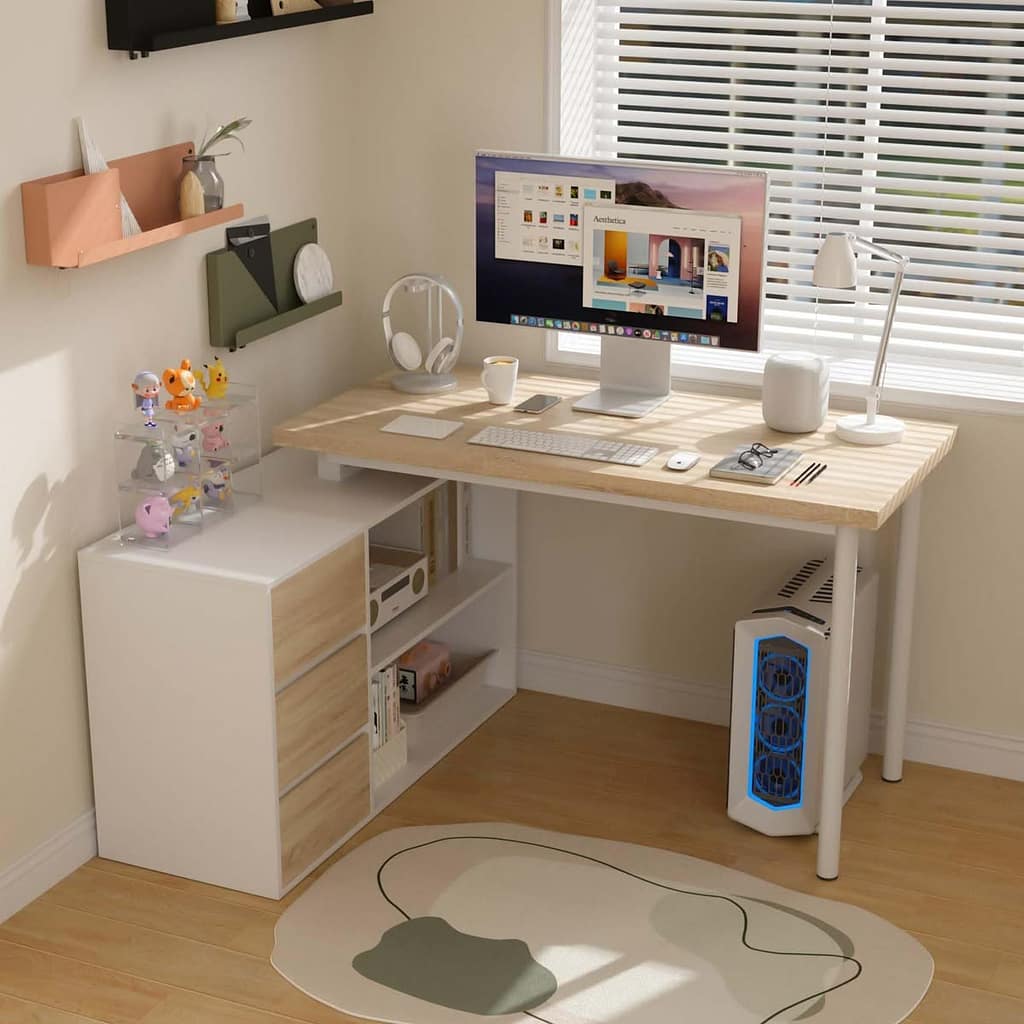In today’s dynamic professional landscape, remote work has transitioned from a niche benefit to a global standard. For countless individuals working from home, the right workspace is no longer a luxury but a necessity. At the heart of this workspace lies your desk – a foundational element that can significantly impact your comfort, focus, and overall productivity.
Why Your Desk Matters More Than You Think
A well-chosen desk goes beyond mere aesthetics. It’s an investment in your long-term health, efficiency, and well-being. A poor desk choice can lead to discomfort, poor posture, distractions, and ultimately, a dip in productivity. Conversely, an ideal desk setup fosters an organized, ergonomic, and inspiring environment conducive to deep work and creative flow.
Key Factors to Consider When Choosing Your Remote Work Desk

Navigating the myriad of desk options can be overwhelming. To simplify your decision, let’s break down the essential elements:
1. Ergonomics: Prioritizing Your Health and Comfort
Ergonomics should be your top priority. An ergonomic desk supports natural posture and reduces strain, preventing common issues like back pain, neck stiffness, and carpal tunnel syndrome.
- Adjustable Height (Standing Desks): The gold standard for modern remote work. A sit-stand desk allows you to alternate between sitting and standing throughout the day, improving circulation, reducing sedentary behavior, and boosting energy levels. Look for electric models for easy transitions and memory presets.
- Optimal Height Range: Ensure the desk can adjust to a height that allows your forearms to be parallel to the floor when typing, with your feet flat on the ground.
- Spacious Surface Area: Enough room for your monitor(s), keyboard, mouse, and any essential work tools without feeling cramped.
2. Size and Space: Fitting Your Home Office Environment
Before you even start looking, measure your available space carefully. Consider:
- Footprint: How much floor space can the desk occupy without overwhelming the room or blocking pathways?
- Shape:
- Rectangular Desks: Versatile and common, fitting well against walls.
- L-Shaped Desks: Ideal for corner spaces, offering ample surface area for multiple monitors or distinct work zones.
- Compact/Small Desks: Perfect for tight spaces or minimalist setups.
- Clearance: Ensure there’s enough room behind and around the desk for your chair, movement, and cable management.
3. Material and Durability: A Long-Term Investment
The material of your desk impacts its durability, weight capacity, and aesthetic. Common options include:
- Wood (Solid Wood/MDF/Particle Board): Classic and sturdy. Solid wood is the most durable and aesthetically pleasing but also the most expensive. MDF and particle board are more budget-friendly but less durable.
- Metal: Often used for frames and legs, offering excellent stability and an industrial look.
- Glass: Offers a modern, minimalist aesthetic, but can show fingerprints easily and may feel less sturdy.
- Laminate: Durable and easy to clean, often mimicking wood or other finishes at a lower cost.
Focus on a robust frame and a scratch-resistant, easy-to-clean desktop surface, especially if you anticipate heavy daily use.
4. Storage and Organization: Keeping Clutter at Bay
A tidy desk is a productive desk. Consider your storage needs:
- Built-in Drawers: Convenient for storing supplies, documents, and personal items.
- Shelving: Integrated shelves can provide display space or additional storage for books and binders.
- Cable Management: Look for desks with built-in grommets, cable trays, or channels to keep wires organized and out of sight, reducing clutter and trip hazards.
- Integrated Power Outlets/USB Ports: A huge convenience for charging devices and powering peripherals.
5. Aesthetic and Style: Complementing Your Home Decor
While functionality is key, your desk should also integrate seamlessly with your home’s aesthetic.
- Modern & Minimalist: Clean lines, simple forms, often in neutral colors like white, black, or grey.
- Industrial: Raw materials like metal and unfinished wood, exposed elements.
- Traditional: Ornate designs, rich wood tones, classic appeal.
- Scandinavian: Light wood, simple designs, focus on functionality and natural light.
Choose a style that makes your workspace an inviting and inspiring place to be, rather than an eyesore.
6. Budget: Finding the Best Value for Your Investment
Desk prices vary widely depending on material, features, and brand. Set a realistic budget beforehand, but remember that investing in a quality, ergonomic desk can save you money on healthcare costs and boost your productivity in the long run. Look for desks that offer the best balance of features, durability, and price.
Setting Up Your Ideal Workstation for Maximum Productivity
Once you’ve chosen your perfect desk, optimizing your entire workstation is the next step.
- Chair: Pair your desk with an ergonomic office chair that provides lumbar support, adjustable armrests, and seat height.
- Monitor Placement: Position your monitor at arm’s length, with the top of the screen at or slightly below eye level.
- Lighting: Ensure adequate lighting to reduce eye strain. Natural light is ideal, supplemented by a good desk lamp.
- Personalization: Add elements that inspire you – a plant, a family photo, or a piece of art – to make the space truly yours.
Conclusion: Your Desk, Your Productivity Hub
Choosing the ideal desk for your remote work setup is a crucial decision that impacts more than just your physical space – it affects your health, comfort, and ultimately, your ability to thrive professionally from home. By carefully considering ergonomics, size, material, storage, style, and budget, you can create a workstation that not only supports your work but also inspires you to achieve new levels of productivity and well-being. Invest wisely, and transform your home office into a true productivity hub.